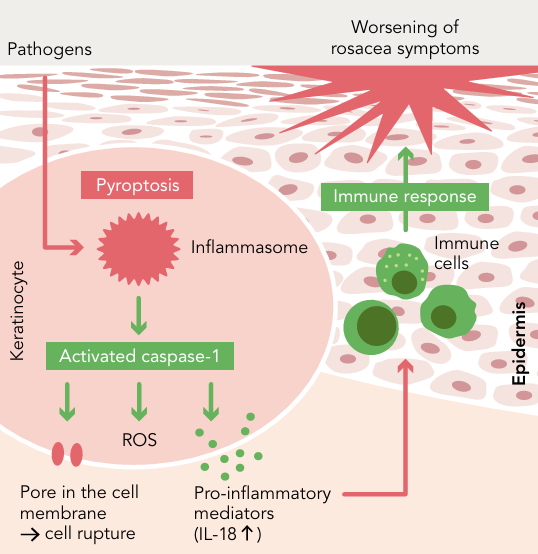Rosacea and Pyroptosis - an inflammatory alliance
Rosacea is a mystery in many ways, with an impressive number of molecules involved.
This chronic skin condition is like a volcano that can erupt at any time and whose lava can continue to smolder for a long time. A flare-up can be triggered by numerous factors such as stress, UV radiation, microorganisms or certain foods. There are also genetic components. It is understandable that the self-confidence of those affected suffers from the visible redness and prominent veins on the face! Treating the underlying inflammation in the skin that causes these symptoms is anything but easy.
But as if this fire wasn't burning hot enough already, there is an amplifier that can make the situation even worse: pyroptosis. The term pyroptosis means the “fiery dying” of a cell, an explosive cell death that is supposed to quickly eliminate infected cells. What makes sense in healthy skin leads to an unwanted worsening of inflammation in rosacea.

How exactly does pyroptosis intensify rosacea symptoms? When infections cause cellular stress, inflammasomes – large protein complexes that act like alarm systems – are formed. These activate an enzymatic process that leads to the formation of pores in the cell membrane – the cell ultimately dies by bursting! This alerts the immune system and stimulates further inflammation. Pyroptosis is thus like an internal fire that contributes to chronic inflammation and redness in rosacea.
Understanding the newly discovered role of pyroptosis in rosacea is important because it offers novel solutions for soothing and optimally caring for the skin. Research on our newest launch AmelioSense™ showed that it can counteract pyroptosis and provide relief for red, sensitive skin.









